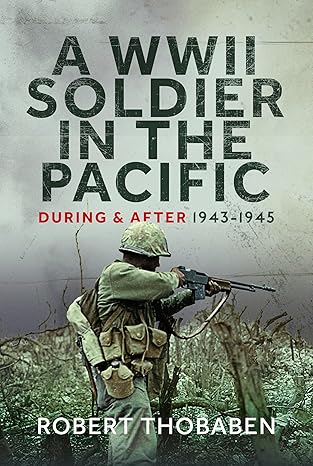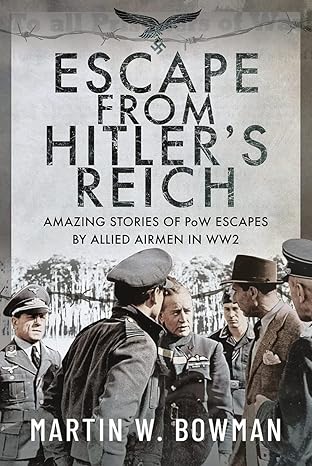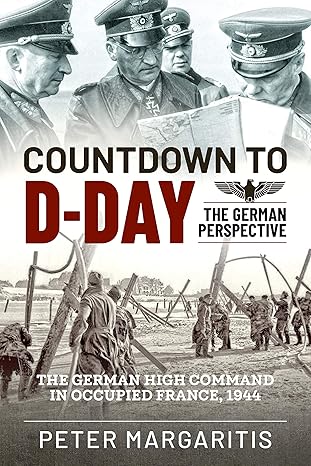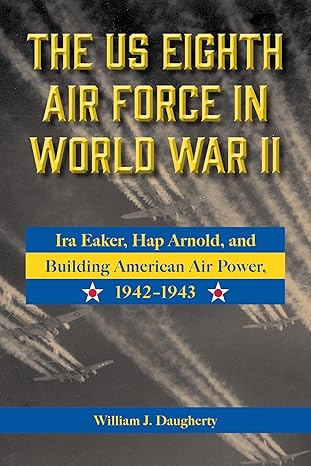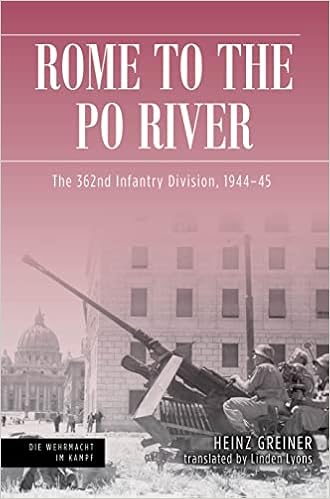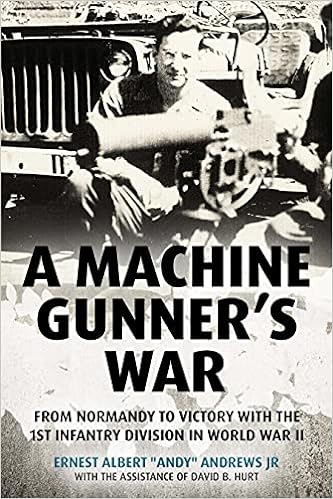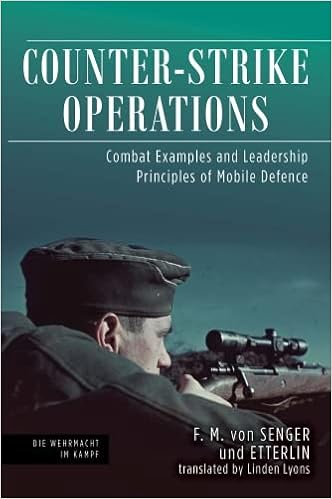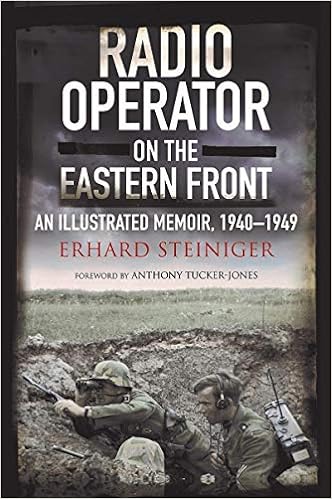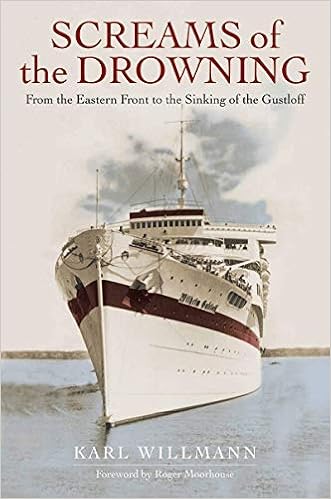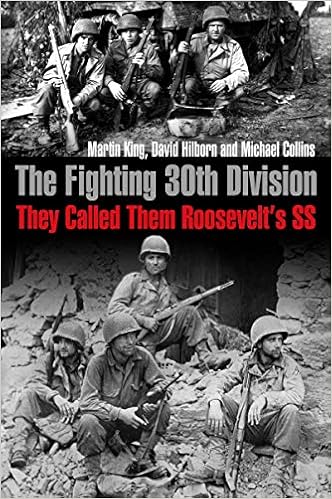The Soviet Invasion of Manchuria and the Kwangtung Army
By Paul S. Teague
From the start of the twentieth century, the Japanese considered Russia, and later the Soviet Union as its potential primary adversary. Defeat in the Russo-Japanese war of 1904-1905 temporarily removed the Russian threat and the Japanese proceeded to garrison Manchuria. Initially this garrison consisted of two Imperial Japanese Army (IJA) divisions; however by 1910 this was reduced to six reserve battalions. In 1916 these reserve battalions were replaced by IJA regulars and in 1919 the Kwangtung Army was established with astrength of 10,000 soldiers by the IJA Order Number Twelve.[1]
Officers in the Kwangtung Army considered themselves the guardians of Japan’s frontiers, and they believed the War Ministry did not appreciate the danger to Manchuria that the Soviets posed. The Kwangtung Army moved quickly to consolidate and expand control of Manchuria, and they began political maneuvers to establish a puppet government.[2] A group of Kwangtung Army officers led by Ishiwara Kanji judged that the moment was ripe for bold action.[3]
They manufactured the Manchurian Incident of 1931 which involved an incident with a Manchurian Warlord, and used it as a reason to take control of all of Manchuria. In 1932 the Kwangtung Army created the state of Manchukuo. The Kwangtung Army takeover of Manchuria in 1931 brought the Japanese face to face with the Soviet Red Army along a three-thousand mile border. Though the Kwangtung Army controlled all of Manchuria they were surrounded on three sides by the Soviets. By this time the Kwangtung Army had expanded to five divisions.[4] Soviet positions in the Far East began to feel threatened by Japan. Although the Soviet Far Eastern Army was more than a match for the Chinese it could not yet hope to defeat the Kwangtung Army. Stalin tried to gain time by offering a non-aggression treaty but Japan refused the offer. In another attempt to placate the Japanese Stalin offered to sell the Chinese Eastern Railway to Japan. It took two years to complete the deal which was concluded 23 March 1935. This agreement meant the loss of all Soviet influence in Manchuria, but it was the price that had to be paid to appease Japan.[5] This transaction demonstrated Soviet respect for the Kwangtung Army.
In 1937 the Japanese found themselves in war with China, and while the Kwangtung Army retained the mission of defending Manchuria from Soviet aggression, many of its forces were detached for the fighting in China. The first contingent of Kwangtung forces to be sent to China consisted of five brigades and nine divisions of Mongolian cavalry.[6] As a result, later that year the Kwangtung Army was further strengthened to five infantry divisions and in 1939 to nine infantry divisions.[7] By 1939 almost twenty-five percent of the IJA’s forty-one divisions were assigned to the Kwangtung Army.
Between 1936 and 1939 there were dozens of border incidents between Soviet and Kwangtung Army forces. One of the major conflicts was the Changkufeng Incident, of 1938 on the northern border between Manchuria and the Soviet Union. The Kwangtung Army ordered the IJA 19th Division to attack and seize the heights of Changkufeng which dominated the border in that area. The heights were also on the Soviet side of the border.[8] After seizing the heights the IJA 19th Division held off several Soviet attacks before being forced to withdraw. The Japanese had their nose bloodied and lost five-hundred dead and nine-hundred wounded, the Soviets 236 dead and 611 wounded. The lesson the Japanese took away was that the Soviets showed little skill or initiative during operations, the Japanese believed this was a result of Stalin’s purges of the Red Army leadership.[9]
This incident was small compared to the Nomonhan incident of 1939. The border in the Nomonhan area was disputed between the Japanese and the Soviets. The Japanese maintained the border was the Khalkhan Gol River. The Soviets claimed the border was actually further east, just east of the village of Nomonhan. In May 1939 Outer Mongolia was an Ally of the Soviet Union. Some Mongolian cavalry entered this disputed area and were driven out by Manchurian cavalry, however they immediately returned. In response to these actions the Kwangtung Army deployed the 23rd Infantry division to drive the Mongolians out. The situation threatened to develop into a military confrontation with the Soviets, something the Japanese Government wished to avoid. However the Kwangtung Army was optimistic that the Soviets would not be prepared to wage a major battle because of their preoccupation with the European situation.[10] Still smarting from their defeat at Changkufeng in August 1938 the Kwangtung Army thought Nomonhan would be a good place to test the fighting quality of the recently purged Soviet Red Army.[11]
In May 1939 when the Nomonhan incident began the Soviets had thirty divisions, 2,300 tanks, mostly light tanks, 1,700 aircraft and 800,000 soldiers in the Far East all under the command of General Georgi Zhukov. As mentioned previously, by 1939 the Kwangtung Army had been enlarged to nine divisions and around 400,000 troops.[12] The Japanese, at this point, suffered from a critical intelligence failure. Japanese intelligence estimates did not underestimate Soviet strength, but they assessed that Japanese “spiritual power,” imaginative leadership, and the power of the Japanese attack would offset the Soviet material advantages.[13] The Kwangtung Army staff projected a quick victory over the Soviets after which they planned to settle the border issues on their terms.
The Japanese attacked, as was their custom, without warning on 18 May 1939. Caught off guard the Soviets were pushed back from their outposts and forward positions. Within the next two weeks the Japanese had seized all of the disputed territory. The Japanese then dug in to oppose any Soviet counter-attack that might materialize. Zhukov had been using this time to prepare a force consisting of four infantry divisions, two cavalry divisions, fifteen battalions of artillery, 350 tanks, 340 armored cars, and 300 combat aircraft. Zhukov was ready by 20 August 1939 and on that day attacked. The Japanese fought savagely to defend their positions but were forced to fall back. The fighting included the largest tank battles in history up to that time, though most of the Soviet tanks were light tanks, as were all of the Japanese tanks. What started out as a border incident had evolved into a full scale war involving over 150,000 soldiers. In the end the Japanese were overwhelmingly defeated and forced to withdraw from the disputed territory after suffering 18,000 casualties. On 15 September a cease-fire was signed. Negotiations went on for two years but in the end all of the Soviet demands were met.[14]
While the overwhelming Soviet material advantage ultimately defeated the Japanese at Nomonhan, this was not the only consideration. The Japanese tactical doctrine designed for infantrymen that stressed offensive action to achieve a quick victory was pitted against a Soviet doctrine that emphasized combined arms operations and protracted warfare.[15] Japanese stereotypes of the Soviets also contributed to their defeat. The Japanese refused to believe that the Soviets could assemble a large combined arms force so far from a rail head, and they also did not believe the Soviets could adapt themselves to defeat Japanese tactics. The Soviets were willing to commit whatever forces and equipment was necessary to defeat the Japanese.[16]
On 22 June 1941 Germany invaded the Soviet Union. Initially it looked like the Soviet Union would be destroyed; momentarily the Japanese considered securing the northern part of the Empire by attacking the Soviet Union. Prudently the Japanese did not attack, but they wished to retain the option for potential use in the future. Accordingly the Kwangtung Army was reinforced. On 7 July 1941the IJA began the largest mobilization in its history and the Kwangtung Army was increased to 700,000 soldiers. The Kwangtung Army immediately drafted an Operations Plan called the “Kwangtung Army Special Maneuvers”. They were not “maneuvers,” of course, but the preparations for the IJA destruction of the Soviet Union.[17]
Because Japan had become so bogged down in China, the IJA decided to strip even more troops from the Kwangtung Army for deployment south into China. This led to a morale crisis within the Kwangtung Army, the leadership was loath to see their combat power diminished, and many of the troops were disappointed to be left behind in Manchuria when the real fighting was going on in China.[18] By February 1945 the Kwangtung Army was a shell of its former self, progressively stripped of equipment and its best men for the fighting in China and the Pacific it had deteriorated to the point it could not possibly successfully defend Manchuria against any allied attack, Soviet or otherwise.[19]
At the Yalta Conference in February 1945 Stalin agreed to enter the fight against Japan “in two or three months” after the defeat of Germany. The agreement granted the Soviet Union free use of the international port of Darien, the lease of Port Arthur as a Soviet naval base, and Soviet possession of Southern Sakhalin and the Kuril Islands.[20] On 8 August 1945 the Soviet Union announced that from tomorrow, that is 9 August, the Soviet Government will consider itself to be at war with Japan. This announcement was staggering to the Japanese and came less than seventy-two hours after the Hiroshima bombing. What the Japanese had dreaded finally came to pass. The first indicator of such an event appeared in April 1945 when the Soviets refused to renew the Japan-Soviet Neutrality Pact.[21] As Soviet Foreign Minister Molotov was delivering the Soviet Declaration of War to the Japanese ambassador, he stated it was being done to “ assist in the prompt re-establishment of peace, and to save the Japanese people from the same fate as the Germans.”[22]
By the time the Soviets invaded Manchuria on 9 August 1945, the Kwangtung Army had been stripped of all of its armor and anti tank guns, its combat readiness rates were only thirty percent of their prewar rates.[23] To be able to execute its mission against the Soviet Union the Kwangtung Army needed a huge increase in troop levels, secure maritime communications with Japan, greater rail capacity within Manchuria, and most importantly overwhelming Air support.[24] Obviously at this stage in the war none of these critically needed commodities would be forth coming.
Most of the Japanese leadership considered the Kwangtung Army the most prestigious and powerful organization in the Japanese army. On paper it did indeed look formidable. The Kwangtung Army was in reality an Army Group with other armies subordinate to it. The Kwangtung Army, commanded by General Yamada Otozo, consisted of the Headquarters which had the 125th Infantry Division directly subordinate to it. The Kwangtung Army also controlled the First Area Army consisting of ten infantry divisions and a separate brigade numbering 222,157 soldiers. This army was responsible for the defense of Eastern Manchuria. The Third Area Army consisted of eight infantry divisions and a separate brigade numbering 180,971 soldiers. This army was responsible for the defense of Central and Western Manchuria. The Fourth Army consisting of three infantry divisions and four separate brigades was responsible for Northern Manchuria. Just after the Soviets attacked Manchuria the IJA also assigned the Twenty-Third Army in Northern Korea and the Seventeenth Area Army in Southern Korea, with their combined nine divisions and two separate brigades, to the Kwangtung Army.[25]
The Soviet forces in the Far East were organized into a unified command under Marshal A. M. Vasilevsky and consisted of the three Fronts, or the equivalent of an American Army Group. There were three Fronts subordinate to the Far Eastern Command, the Trans-Baikal Front, the 1st Far Eastern Front, and the 2nd Far Eastern Front. The Trans-Baikal Front contained a Tank Army, four Combined Arms Armies, a Mechanized Group, and an Air Army. This Front had 654,000 men organized into thirty infantry divisions, five cavalry divisions, two tank divisions, ten tank brigades, and several other independent brigades.[26]
The 1st Far Eastern Front contained four Combined Arms Armies, a Mechanized Corps, an Operational Group, and an Air Army. The Front consisted of 586,559 soldiers organized into thirty-two divisions, twelve tank brigades, and two mechanized brigades. The 2nd Far Eastern Front included three Combined Arms Armies, an Infantry Corps, an Operational Group, and an Air Army. This Front, the smallest of the three, contained 337,096 soldiers.[27]
In total the Soviets had 1,577,725 soldiers, eighty-nine divisions, and 3,721aircraft for commitment into Manchuria.[28] Japanese intelligence estimated that between twenty and twenty-five Soviet divisions were deployed to the Far East after the surrender of Germany, added to the Soviet divisions already deployed there, the Japanese General Staff estimated that the total number to be committed against the Kwangtung Army was forty to forty-five Soviet divisions. The Japanese therefore grossly underestimated the ground combat power of the Soviets; on the other hand they overestimated Soviet air power as Japanese intelligence estimated that the Soviets had the capability to commit 5,060 aircraft to the campaign in Manchuria.[29] Japanese intelligence had accurately reported that Soviet troops, guns, tanks, and other equipment was being shipped to eastern Siberia beginning in February 1945. In May 1945 alone, Japanese intelligence reported, 870 guns, 1,200 tanks, and 160,000 troops had arrived. They also reported the Soviets had no winter clothing or equipment, the Japanese intelligence officers had correctly assessed the Soviets were planning on a short campaign that would be complete before cold weather set in.[30]
Marshal Vasilevsky’s plan was to execute a strategic double envelopment along three axes in order to secure Manchuria and destroy the Kwangtung Army. The Trans-Baikal Front would attack into western Manchuria while the 1st Far Eastern Front would attack westward into eastern Manchuria, these two Fronts would converge in the Mukden, Changchun, and Harbin areas of south central Manchuria. The 2nd Far East Front would conduct a supporting attack into northern Manchuria and drive south to Harbin.[31] The Trans-Baikal Front, the Soviet right pincer, was to attack from the west across the Mongolian desert and over the Greater Khingan mountain range, with Mukden as the primary objective; the 36th Army was to break off and attack towards Harbin in order to link up the 2nd Far East Front.[32] The 1st Far East Front, the Soviet left pincer, was to attack from the east, cross the Lesser Khingan mountains and capture Changchun. The 1st Far East Front was then to block Japanese lines of withdrawal into Korea.[33] The 2nd Far East Front was to attack in the center to exert maximum pressure on Kwangtung Army forces in order to destroy them or to prevent their commitment against the other two Fronts in the south.[34]
As mentioned previously the IJA leadership, which should have been preparing for a Soviet invasion, continued to withdraw substantial forces from the Kwangtung Army. The IJA had a valid concern about a potential allied invasion of the Home Islands and preparing for this was their focus. As a result many of the strongest units, especially armor and infantry, were withdrawn, many ending up fighting on Okinawa. In addition to these forces air assets were also withdrawn. They were building up a Kamikaze force to attack any potential Allied invasion fleet. Therefore the combat power of the Kwangtung Army was greatly diminished and they had to develop a new defensive plan based on the resources on hand. The new defensive plan, instead of repelling the enemy at the borders, called for fighting a delaying action along the border and withdrawing to prepared defenses in southeastern Manchuria for a final defensive battle in which the Soviets would be defeated. This plan was based on some faulty assumptions. Not only had Soviet strength been underestimated, but the Japanese also believed that the rugged terrain would be a constraint to Soviet maneuver. The Japanese assessment was that the western borderlands could not be crossed by tanks and heavy equipment. The Kwangtung Army intelligence officers also believed the Mongolian desert and the Grand Khinghan Mountains were impassable natural barriers. These poor assumptions lead to the Japanese misjudging the speed and dimensions of a Soviet attack. IJA Headquarters had concluded that the Red Army could not carry out large-scale combined-arms assaults because of logistical constraints that would be caused by the terrain.[35]
In order to deceive the Soviets and prevent them from identifying their vulnerabilities caused by the withdrawal of combat power in Manchuria, the Kwangtung Army mobilized reservists and new recruits to form new divisions and brigades in order to maintain the appearance of a formidable fighting force. Unfortunately for the Kwangtung Army, more than one-fourth of its entire combat force was mobilized only ten days prior to the Soviet offensive.[36]
At just past midnight on 9 Aug 1945, or a little over an hour after the declaration of war, Soviet troops in three Fronts poured into Manchuria. In terms of training, the Kwangtung Army at this point was more of a counter-insurgency force rather than a conventional military force, thus it was poorly prepared to defend against such an invasion as events would show. The Trans-Baikal Front attacked across the Manchurian border at 12:10 A.M. on 9 August 1945 without artillery or air preparation. The Soviets encountered weak resistance from Japanese who thought that armored units could not maneuver in this rugged terrain. The lead element of the Front was the 6th Guards Tank Army which advanced on an axis twenty kilometers wide. By nightfall the 6th Guards Tank Army had advanced one-hundred kilometers and reached the foothills of the Grand Khinghan Mountains.[37] By 11:00 P.M. the next night the 6th Guards Tank Army crested the Grand Khinghan Mountains and proceeded down toward the central Manchurian plain.[38] In the first three days and over rough terrain the 6th Guards Tank Army advanced more than 350kilometers. Due to the rapid Soviet advance two Japanese divisions in the area never engaged the Soviets. The bold and daring strike by the Trans-Baikal Front enabled them to obtain their objectives in the central Manchurian plain on the fourth day of the offensive, a day ahead of schedule. However, 6th Guards Tank Army had over extended their logistics. Their supply line ran over 700 kilometers to the rear and the Army was critically low in fuel. This required the Trans-Baikal Front to halt its momentum on the 12 and 13 of August in order to resupply fuel by airlift.[39]
In the evening of 13 August the Soviets resumed offensive operations being hindered only by weather and desperate Japanese suicide attacks. The Kwangtung Army's combat guide stated that for defense against tanks, the policy was suicide attack, "The essence of anti-tank combat lies in the suicide assault by the entire force; each man must destroy at least one tank."[40] It was these brave Kwangtung Army Soldiers that offered the most effective resistance to the Soviets on this Front.
The 1st Far Eastern Front formed the left pincer of the double envelopment. It commenced its attack in darkness under cover of thunderstorms, catching the Japanese completely by surprise. This Front had to deal with the most heavily fortified region of the Manchurian border, known as the "concrete belt.” In addition the terrain was extremely marshy terrain.[41] The attack began at 12:30 A.M. on 9 August 1945 without artillery support. The Soviets launched their forces along multiple axes over terrain the Kwangtung Army had thought to be impassible by large forces. The Japanese were completely surprised and before they could react the 1st Far Eastern Front had advanced fifteen to twenty kilometers. The Soviets overcame all obstacles, even building roads through the marshy ground and forests.[42] By 14 August, the 1st Far Eastern Front had advanced 120-150 kilometers and succeeded in tying down the Kwangtung Army in Eastern Manchuria and distracting their attention from the attack occurring in the west. By 16 August the 1st Far Eastern Front had forced the collapse of the Japanese defenses in east Manchuria.[43]
The 2nd Far East Front began its attack at 1:00 A. M. on 9 August 1945. The first task to be accomplished was the crossing of the Amur River which separated the Soviet Union from Manchuria. To facilitate the accomplishment of this task the Amur River Flotilla was assigned to the 2nd Far East Front. The attack began in a severe rain storm and the river was swollen and the banks muddy. The Japanese on the far side of the river put up a spirited defense but by 7:30 A.M. that morning the Front had secured the islands in the river, and by early the next morning the lead elements of the Front were securing the southern bank of the river. The first echelon of the Front was across the river by the afternoon of 11 August, but it took an additional two days for the supporting logistical units to cross, by that time the combat units had advanced one-hundred kilometers resulting in an over-extended supply line from the start of the attack.[44] The Amur River Flotilla, as will be seen, was essential to overcoming this logistical situation.
As the region was being secured the Soviets used the Amur River Flotilla to transport troops, tanks and supplies, along the many water ways, further south to facilitate the advance of the 2nd Far East Front. On 11 August the Soviets began their assault on the Fuchin Fortified Region, where the Kwangtung Army troops put up a stubborn defense for two days. On 13 August the Fuchin Fortified Region fell to the 2nd Far East Front, they then turned their attention to the city of Chiamussu. On 14 August the 2nd Far East Front had to cross another major river, the Sungari River, and again it was the Amur River Flotilla that made the crossing possible. Later that day the Soviets began their attack on Chiamussu. After two days, of bitter fighting, Japanese resistance broke and on 16 August the Soviets secured the city.[45]
During the seven days of fighting the Soviets advanced 210 kilometers and prevented the Japanese from reinforcing the Kwangtung Army defenses in the south. The support of the Amur River Flotilla was a key element to this success. The Amur River Flotilla transported 91,000 soldiers, 150 tanks, 413 artillery pieces, 3,000 horses and 28,000 tons of supplies to the troops in combat.[46]
Throughout the campaign, especially in the Trans-Baikal Front and 1st Far East Front zones of attack, the Soviets continued to use tank-heavy forward detachments to quickly penetrate through and bypass Japanese defensive positions. Encircled and cut off from any possible re-enforcements, follow-on forces methodically overwhelmed the defenders with massive air and artillery support in close coordination with the Soviet infantry. As a result of the Soviet’s meticulous planning and bold offensive action, they took 594,000 Japanese prisoners including 143 generals and 20,000 wounded. The Kwangtung Army suffered over 80,000 men and officers killed in combat which lasted less than two weeks. In contrast, the well- prepared Soviet Army had 8,219 killed and 22,264 wounded.[47]
A significant advantage the Soviets had was the border itself. The most difficult task in executing a double envelopment is the penetration of the enemy’s flanks in order to turn those flanks. This was, in effect accomplished by the border before the campaign even began. The western, northern, and eastern border dictated that the Kwangtung army would be surrounded on three sides from the outset. In the North, the 2nd Far East Front was positioned to fix the Kwangtung Army Forces. The Trans-Baikal Front and 1st Far East Front, the right and left pincers, did not have to execute the complicated turning movements normally associated with envelopment; they just had to plunge straight ahead. The political decisions, whenever they were made, that determined the Manchurian borders had turned the flanks of the Kwangtung Army. On 19 August, the Kwangtung Army transmitted a surrender order to its field commands and the Japanese capitulated everywhere in Manchuria.
A significant aspect of the defeat of the Kwangtung Army is that they failed to remember the lessons learned at Nomonhan. For a second time, the Kwangtung Army underestimated the Soviet Army and was subjected to another devastating attack. The absence of armor and modern anti-tank weapons was a result of the Japanese War Ministry’s decision to give priority to the production of aircraft over the procurement of tanks.[48] In January 1945, the Kwangtung Army was further handicapped when approximately one-third of the Kwangtung Army's war materiel and large numbers of staff officers were ordered home for homeland defense.[49] In addition, poor communications prevailed throughout the Kwangtung Army. The Kwangtung Army headquarters had no means of military communications; they used public telephone lines which were disrupted at the beginning of the Soviet invasion. As a result, the Kwangtung Army had little command and control over its forces.
The popular conception was that Kwangtung Army soldiers were the epitome of devotion to duty, courage, and fighting spirit.[50] However during the campaign when newly mobilized Reservists were ordered to continue the “heroic defense” while Kwangtung Army officers evacuated their families and the Headquarters fled from Hsinching to Tunghwa the bitterness began to show. The reservists cursed the Kwangtung Army, “those bastards left us holding the bag,” “those gutless wonders,” “the great Kwangtung Army, my ass,” were comments the Kwangtung officers heard as they withdrew.[51]
The Soviet success in Manchuria, some say, contributed more to the surrender of Japan than the atomic bombing of Hiroshima and Nagasaki. Pravda and Izvestia, on 15 and 16 August 1945, wrote that it was not the imminence of Japan’s surrender that prompted the Soviet Union to enter the war against Japan; rather it was the Soviet entry into the war that hastened the surrender of Japan.[52] There were some events that lend credibility to this claim. While the IJA was aware of the shortcomings of the once mighty Kwangtung Army, the politicians who advised the Emperor were not necessarily as well informed. At a meeting in Tokyo, Prime Minister Kantaro Suzuki asked General Sumihisa Ikeda of the Cabinet Planning Bureau, and who had recently arrived from the Kwangtung Army, if that Army was capable of repulsing the Soviet attack? Ikeda replied “the Kwangtung Army was hopeless, within two weeks, Changchu, the major city in central Manchuria, will be occupied by the Soviets.” Suzuki, then asked if the Kwangtung Army was really that week, when Ikeda replied it was, Suzuki realized the game was up.[53] Even if the Kwangtung Army had been fully manned and equipped it is doubtful they would have been able to successfully defend against the Soviet attack in Manchuria. However the low state of training and readiness within that Army ensured the final outcome of the campaign. The Soviet invasion of Manchuria and the defeat of the Kwangtung Army, at a minimum, contributed to the Japanese decision to surrender.
| * * * |
Show Notes
Bibliography
Brooks, Lester. Behind Japan’s Surrender. New York: McGraw-Hill,1968.
Dorn, Frank. The Sino Japanese War 1937-1941: From the Marco Polo Bridge to Pearl Harbor. New York: MacMillan Publishing, 1974.
Drea, Edward. Nomonhan: Japanese-Soviet Tactical Combat, 1939. Fort Leavenworth, KS: Combat Studies Institute, 1981.
Glanz, David. August Storm: The Soviet 1945 Strategic Offensive in Manchuria. (Fort Leavenworth: Combat Studies Institute, 1983.
Glanz, David. August Storm: Soviet Tactical and Operational Combat in Manchuria, 1945. (Fort Leavenworth: Combat Studies Institute, 1983.
Hastings, Max. Retribution. New York: Alfred A. Knopf, 2008.
Hayashi, Saburo. Study of Strategical and tactical Peculiarites of Far Eastern Russia and Soviet Far East Forces. Tokyo: Headquarters, Army Forces Far East, 1953.
Hayashi, Saburo and Coox, Alvin. Kogun, The Japanese Army in the Pacific War. Santa Barbara, CA: Greenwood Publishing Group, 1979.
Ienaga,Saburo. The Pacific War: World War II and the Japanese, 1931-1945. New York: Pantheon Books, 1978.
Iriye, Akira. The Origins of the Second World War in Asia and the Pacific. New York: Longman, 1987.
Liberach, Jan. The Rise of the Soviet Empire: A Study of Soviet Foreign Policy.New York: Praeger, 1964.
Merridale, Catherine . Ivan’s War: Life and Death in the Red Army, 1939-1945. New York: Henry Holt and Company, 2006.
Peattie, Mark. Ishiwara Kanji and Japan’s Confrontation with the West. London: Princeton University Press, 1975.
Toland, John. The Rising Sun: The Decline and Fall of the Japanese Empire. Toronto: Bantam Books, 1971.
Williams, Peter and David Wallace. Unit 731: Japan’s Secret Biological Warfare in World War II. New York: The Free Press, 1989.
Footnotes
[1]. Edward Drea, Nomonhan: Japanese-Soviet Tactical Combat, 1939 (Fort Leavenworth, KS: Combat Studies Institute, 1981), 12.
[2]. Saburo Ienaga, The Pacific War: World War II and the Japanese, 1931-1945 (New York: Pantheon Books, 1978), 63.
[3]. Akira Iriye, The Origins of the Second World War in Asia and the Pacific (New York: Longman, 1987), 7.
[4]. Drea, Nomonhan, 12-13.
[5]. Jan Liberach, The Rise of the Soviet Empire: A Study of Soviet Foreign Policy (New York: Praeger, 1964), 64-65.
[6]. Frank Dorn, The Sino Japanese War 1937-1941: From the Marco Polo Bridge to Pearl Harbor (New York: MacMillan Publishing, 1974), 105.
[7]. Drea, Nomonhan, 13.
[8]. Dorn, The Sino Japanese War, 202.
[9]. Drea, Nomonhan, 14.
[10]. Iriye, The Origins of the Second World War, 77.
[11]. Dorn, The Sino Japanese War, 266.
[12]. Ibid.
[13]. Drea, Nomonhan, 87.
[14]. Dorn, The Sino Japanese War, 267-268.
[15]. Drea, Nomonhan, 90.
[16]. Drea, Nomonhan, 87.
[17]. Ienaga, The Pacific War, 83-84.
[18]. Peter Williams and David Wallace, Unit 731: Japan’s Secret Biological Warfare in World War II (New York: The Free Press,1989), 67-68.
[19]. Williams and Wallace, Unit 731, 81.
[20]. Liberach, The Rise of the Soviet Empire, 129.
[21]. Lester Brooks, Behind Japan’s Surrender (New York: McGraw-Hill,1968), 15-16.
[22]. Max Hastings, Retribution (New York: Alfred A. Knopf, 2008), 481.
[23]. John Toland, The Rising Sun: The Decline and Fall of the Japanese Empire (Toronto: Bantam Books,1971), 897.
[24]. Mark Peattie, Ishiwara Kanji and Japan’s Confrontation with the West (London: Princeton University Press, 1975), 313.
[25]. David Glanz, August Storm: The Soviet 1945 Strategic Offensive in Manchuria (Fort Leavenworth: Combat Studies Institute, 1983), 25-26.
[26]. Ibid., 39.
[27]. Ibid., 41-42.
[28]. Ibid., 44.
[29]. Saburo Hayashi, Study of Strategical and tactical Peculiarites of Far Eastern Russia and Soviet Far East Forces/ (Tokyo: Headquarters, Army Forces Far East, 1953), 119-120.
[30]. Lester Brooks, Behind Japan’s Surrender (New York: McGraw-Hill,1968), 18.
[31]. Glanz, August Storm: Strategic Offensive, 73.
[32]. Ibid., 75.
[33]. David Glanz, August Storm: The Soviet Tactical and Operational Combat in Manchuria, 1945 (Fort Leavenworth: Combat Studies Institute, 1983), 11.
[34]. Glanz, August Storm: Strategic Offensive, 78.
[35]. Ibid., 34-35.
[36]. Drea, Nomonhan, 63.
[37]. Glanz, August Storm: Strategic Offensive, 83.
[38]. Ibid., 90.
[39]. Ibid., 103.
[40]. Saburo Hayashi and Alvin Coox, Kogun, The Japanese Army in the Pacific War (Santa Barbara, CA: Greenwood Publishing Group, 1979), ii.
[41]. Glanz, August Storm: Strategic Offensive, 96.
[42]. Ibid., 113.
[43]. Glanz, August Storm: The Soviet Tactical, 3.
[44]. Glanz, August Storm: Strategic Offensive, 153.
[45]. Ibid., 157.
[46]. Glanz, August Storm: The Soviet Tactical, 197.
[47]. Hayashi and Coox, Kogun. 175.
[48]. Drea, Nomonhan, 90.
[49]. Hayashi, Study of Strategical 71.
[50]. Ienaga, The Pacific War, 50.
[51]. Ienaga, The Pacific War, 191.
[52]. Hayashi, Study of Strategical, 116.
[53]. Lester Brooks, Behind Japan’s Surrender (New York: McGraw-Hill,1968), 17.
© 2025 Paul S. Teague
Written by Paul S. Teague
About the author:
Paul S. Teague retired after 26 years in the U. S. Army as an Infantry and Intelligence Officer. He has a BS in History from Eastern Michigan University, and is currently completing his Masters Degree in European History and writing his thesis on Field Marshal Bernard Montgomery. The First and Second World Wars are his primary historical interests. He lives with his wife and three children in Neunkirchen am Potzberg, Germany.
* Views expressed by contributors are their own and do not necessarily represent those of MilitaryHistoryOnline.com.

